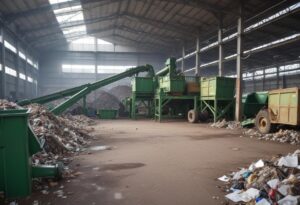Can Vertical Farming Revolutionize Agriculture in India?
India, a land of vibrant agriculture, faces a multitude of challenges. Land scarcity, water depletion, climate change, and an ever-growing population threaten food security and sustainable farming practices. In this context, vertical farming emerges as a potential game-changer. This innovative approach to agriculture involves growing crops in vertically stacked layers, maximizing space utilization and minimizing resource consumption.
The Allure of Vertical Farming for India
Vertical farming offers several advantages that hold immense promise for India’s agricultural sector:
Increased Land Efficiency: Vertical farms can be established in urban areas, on rooftops, or even within buildings, utilizing land that is otherwise unproductive for traditional agriculture. This is particularly relevant considering India’s shrinking arable land and the growing demand for urban space.
Reduced Water Usage: Vertical farming utilizes hydroponic or aeroponic systems, which require significantly less water compared to traditional soil-based agriculture. Water scarcity is a major concern in India, and vertical farming offers a solution to grow crops with minimal water footprint.
Controlled Environment: Vertical farms provide a controlled environment with optimized lighting, temperature, and humidity. This allows for year-round production, reduces dependence on weather conditions, and minimizes crop losses due to pests and diseases.
Improved Food Quality and Safety: Vertical farming allows for stricter control over inputs and growing conditions, potentially leading to higher yields of cleaner and healthier produce.
The Rise of Vertical Farming in India
The concept of vertical farming is still nascent in India, but several initiatives demonstrate its potential:
UrbanKisaan: This Bengaluru-based company operates vertical farms across India, growing a variety of leafy greens and herbs. Their focus on local production and reduced water usage resonates with urban consumers seeking fresh and sustainable produce.
Clover Greens: This Noida-based company utilizes vertical farming technology to grow high-quality lettuce, microgreens, and other salad greens. Their commitment to innovation and efficient resource use positions them as a leader in the Indian vertical farming landscape.
Barton Breeze: This company operates smart farms across India, leveraging vertical farming technology and data analytics to optimize crop yields. Their focus on precision agriculture and automation contributes to increased efficiency and improved crop quality.
Maharashtra Agricultural Department Initiatives: The Maharashtra government has launched pilot projects for vertical farming in collaboration with private companies. These initiatives aim to evaluate the feasibility and potential of vertical farming for wider adoption in the state.
Challenges and Considerations
While promising, vertical farming in India faces some challenges:
High Initial Investment: Establishing vertical farms requires significant upfront investment in technology, infrastructure, and controlled environment systems. This can be a barrier for smaller players and farmers.
Limited Product Range: Current vertical farming technology is primarily suited for leafy greens and microgreens. Scaling up to grow a wider variety of crops, including fruits and vegetables, requires further technological advancements.
Energy Consumption: Artificial lighting and climate control systems in vertical farms require substantial energy input. The sustainability of vertical farming hinges on utilizing renewable energy sources like solar power.
Skilled Workforce: Operating and maintaining vertical farms requires a skilled workforce trained in areas like hydroponics, automation, and data analysis. Developing such a workforce is crucial for the successful implementation of vertical farming technology.
The Road Ahead: A Sustainable and Inclusive Future
For vertical farming to truly revolutionize Indian agriculture, a multi-pronged approach is necessary:
Government Support: Government initiatives like subsidies, tax breaks, and research grants can incentivize investment in vertical farming technologies.
Focus on Innovation: Continued research and development efforts are crucial to reduce costs, improve energy efficiency, and expand the range of crops suitable for vertical farming.
Public-Private Partnerships: Collaboration between private companies, research institutions, and government agencies can accelerate the adoption and advancement of vertical farming technologies.
Skilling Initiatives: Developing training programs to create a skilled workforce is essential for the successful operation and maintenance of vertical farms.
Conclusion: A Promising Future for Indian Agriculture
Vertical farming is not a silver bullet, but it holds immense potential to transform India’s agricultural landscape. By addressing the challenges, fostering innovation, and promoting sustainable practices, vertical farming can contribute to India’s food security, reduce its environmental footprint, and empower local communities. As technology advances and costs decrease, vertical farming can become a viable and complementary option to traditional agriculture, ensuring a more productive, sustainable, and resilient food system for India’s future.
- Fur-Ever Friends Boutique: Tail-Wagging Treasures
- Critter Comforts and Beyond: Exploring the Expansive World of Pet Shops
- Paws, Claws, and Beyond: Navigating the Vast Realm of Pet Store Wonders




